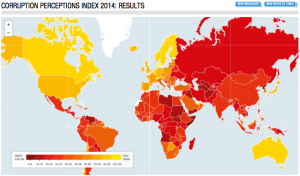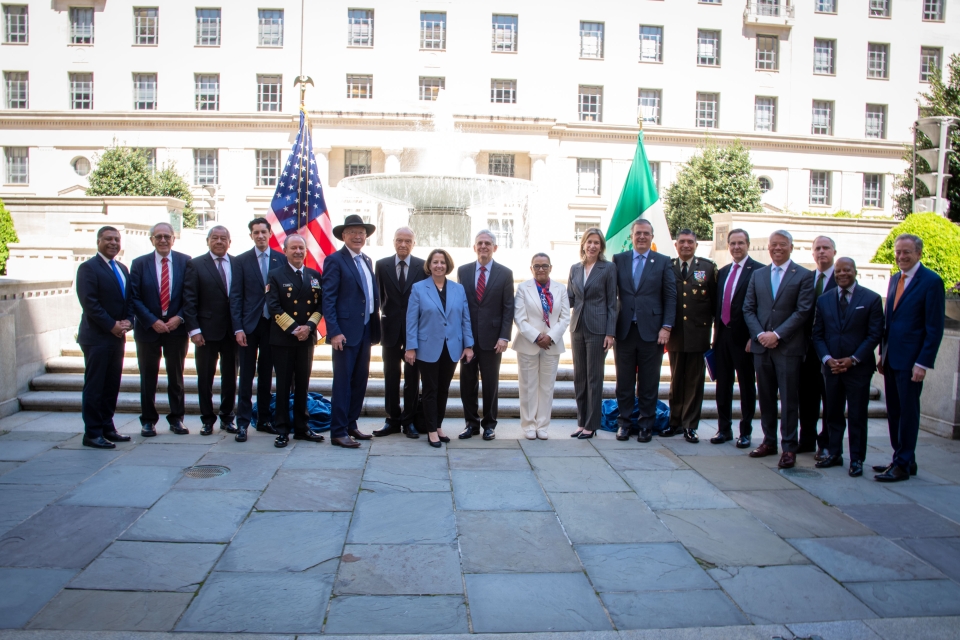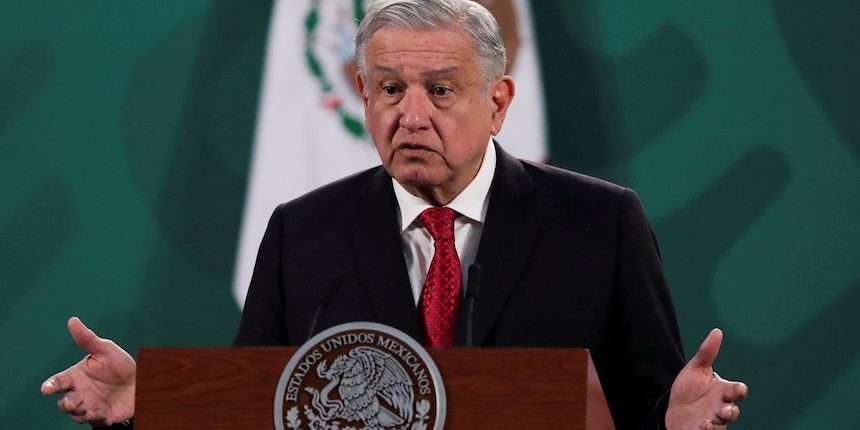
01/05/15 (written by cmolzahn) — Transparency International released it annual Corruption Perceptions Index in early December, and once again Mexico finds itself in the bottom half of nations worldwide. Mexico ranks 103rd out of 175 total countries, with a score of 35 out of a possible 100.
Mexico’s score has remained relatively flat since 2006, when it scored 33. Its lowest score during that period came in 2010, when it received 31. However, Mexico’s world ranking has declined from 70th in 2006 to its current ranking of 103, due to other countries with similar scores at that time making substantial progress, while Mexico has remained relatively stagnant. All of the countries sharing Mexico’s ranking of 70th in 2006—Brazil, China, Egypt, Ghana, India, Peru, Saudi Arabia and Senegal—rank above Mexico in the 2014 index.
Mexico ranks in the middle of the pack relative to other Latin American countries. Venezuela ranks the lowest, with a score of 19 and ranking of 161st, while Costa Rica maintains the highest score (54) and ranking (47th). Seven countries in Latin America rank above Mexico, while one—Bolivia—maintains the same score. As Transparency International’s Mexico chapter, Transparencia Mexicana, points out, Mexico finds itself ranked below its principle competitors and trading partners in the region, 82 positions below Chile and 34 below Brazil. Along with Bolivia, Mexico ranks last among countries belonging to the Organization for Economic Co-operation and Development (OECD).
Transparencia Mexicana urges aggressive anticorruption reforms in order to “leave the position of stagnation in which it has remained for almost a decade.” In this spirit, the organization recommends five specific points of action:
- The creation of a National Anticorruption System (Sistema Nacional Anticorrupción) bringing together the “nascent” National Transparency System (Sistema Nacional de Transparencia), and the National Investigative System (Sistema Nacional de Fiscalización, SNF);
- Internal and external control and investigative authorities as well as “an authentic Federal Tribunal of Responsibilities (Tribunal Federal de Responsabilidades) for the three government branches;”
- Establishing general legislation for “defining, regulating and sanctioning conflict of interest in the three [governmental] powers for state and municipal governments;”
- Require all political candidates to make public three declarations: a statement of assets, tax statements for the previous five years and a declaration of potential conflicts of interest;
- That the alliance for open parliament and government to which the Mexican congress signed in September result in “transverse and general practices,” and that Mexico must approve a national policy of open data.
Sources:
“Índice de corrupción 2014: México el peor de la OCDE.” El Economista. December 2, 2014.
“2014 Corruption Perceptions Index.” Transparency International. Accessed December 20, 2014.




